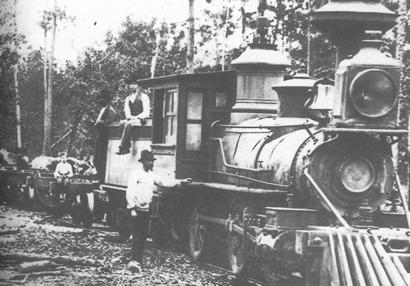|
They
were an unlikely business partnership--a German immigrant, an Irish
storekeeper, and two Jewish brothers.
But in 1900, Joseph Kurth, Simon W. Henderson, and Sam and Eli Wiener
pooled their resources and created the Angelina and Neches River Railroad.
It wasn’t much of a railroad in the beginning--two wood-burning narrow-gauge
locomotives and ten miles of track.
But in almost 110 years, the A&NR has become as much a part of East
Texas as the pine trees that blanket the region.
The shortline’s service helped shape the success of Lufkin’s
largest corporations--firms like Lufkin Industries, Texas Foundries,
Inc., Southland Paper Mills, which made the South’s first newsprint
from southern pines, and Angelina Plywood, which made some of the
first southern pine plywood in the nation.
The A&NR also became a viable business partner with dozens of other
businesses, transporting chemicals, construction materials, groceries,
metals and other goods.
The railroad also became one of the proudest possessions of fhe founding
families, and many of them spent time “just riding up and down the
line” with the railroad crews. |
 |
An early A&NR
locomotive on a track near Nacalina
Photo courtesy Bob Bowman |
Charles L. Kelty
and James A. Ewing, who owned the sawmill before selling it to Kurth
in 1888, had previously utilized a crude log tram consisting of four-by-four
wooden rails over which a few log cars were pulled by oxen and mule
teams and later by a small shay or "dinky" steam engine.
For the most part, oxen pulling eight-wheel wagons were used to transport
logs from the woods to the wooden-tracked tram sites. This worked
fine as long as timber stands were accessible within a few miles from
the sawmill or the tram roads. In 1911, the A&NR completed a line
from Nacalina, at the Angelina River, to Chireno
in Nacogdoches
County, a distance of 10.74 miles, after the citizens of Chireno
agreed to pay $10,200 to the company when the tracks were completed
to the community.
Bob Bowman's East Texas May
10, 2009 Column
A weekly column syndicated in 70 East Texas newspapers
See Texas Railroads |
\
|
|
